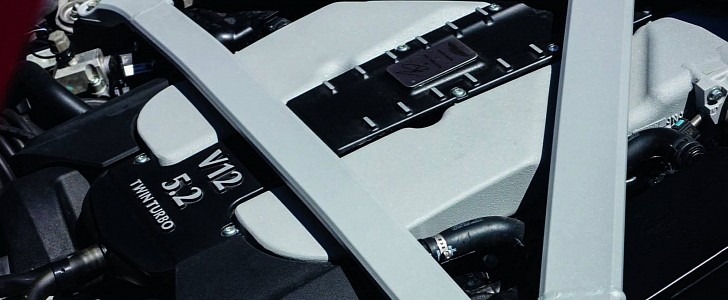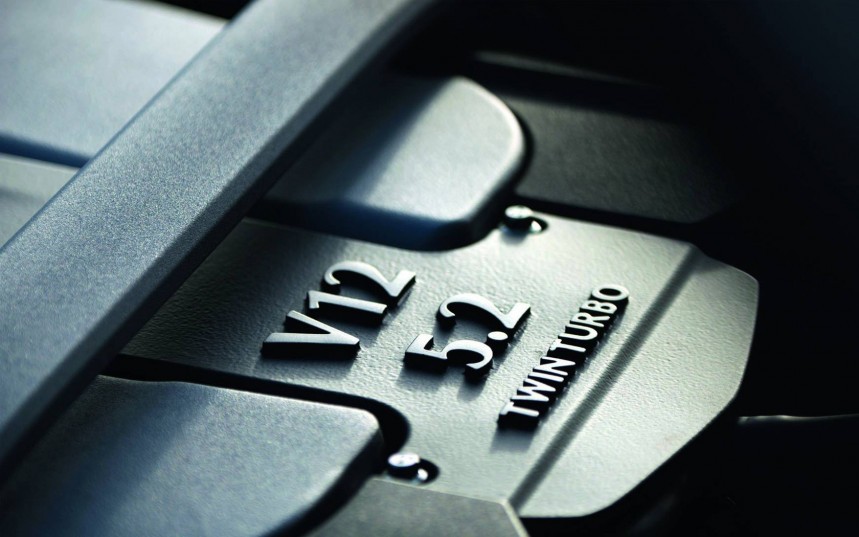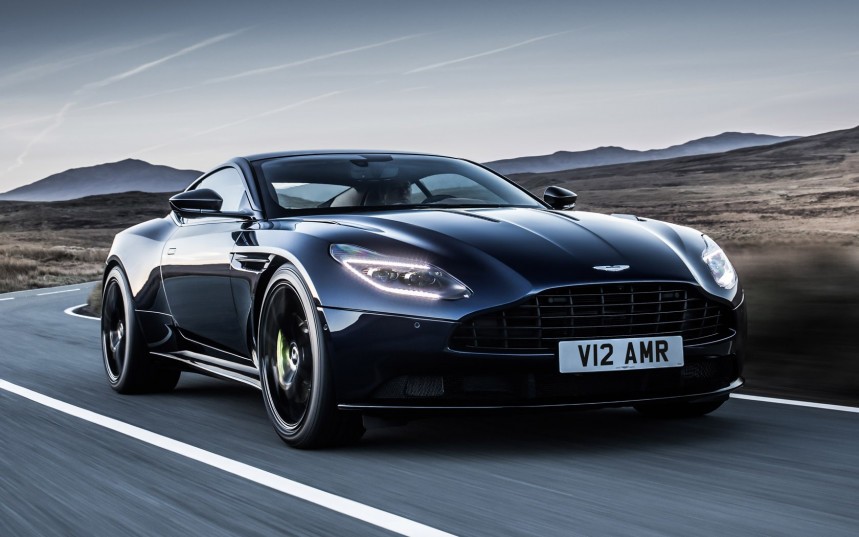The British automaker did not use a V12 engine on its road cars until modern times, as the weapon of choice for their flagships was the Tadek Marek V8, a legendary engine developed in the late ‘60s by Polish engineer Tadeusz "Tadek" Marek and was used to power Aston Martins for more than 30 years.
For over one hundred years, Aston Martin has been building legendary high-performance cars that have made a name for themselves for being extremely elegant and fun to drive.
In modern times, despite the manufacturer’s tumultuous history, models such as the V12 Vanquish or DBS V12 reached the highest levels of stardom, featuring in multiple James Bond movies.
On the track, their DBR9 sibling made a name for itself by taking two LMGT1 class wins at Le Mans in 2007 and 2008. Driving these cars to legendary status was a naturally aspired V12 engine.
The first Aston V12 was developed in 1999, when the company was under the ownership of Ford Motor Company. A joint team of British and American engineers took the Ford Duratec V6 motor, which until this day is one of the most adaptable engines ever made, and pretty much doubled the cylinder count, giving birth to the British company’s first V12.
After 17 years of successful service and the ongoing push to create more fuel-efficient and environmentally friendly engines, Aston Martin retired the naturally aspirated V12.
In 2016, the second generation V12 was revealed, which signaled a return to the strength and grace of hand-built engines developed exclusively by Aston Martin.
The new engine, codenamed AE31, was built from the ground up by the British engineers and is the first production-series turbocharged V12 in Aston Martin’s history.
The extra boost enabled engineers to lower the displacement of the new V12 to 5,204 ccs (317.6 cu in).
In order to ease manufacturing efforts, the engine uses the same 21.5 mm (0.84 inches) bore offset and 60-degree angle as the earlier 6.0-liter unit. The bore size is also the same at 89 mm (3.5 inches), but the stroke is shorter at 69.7 mm (2.7 inches).
The new unit features an all-alloy quad overhead cam and an innovatively designed lightweight engine block. Moreover, a lighter exhaust manifold casting and crankshaft were developed.
With the addition of the pair of twin-scroll turbos and the associated parts, the engine should have been 35 kg (77 lbs.) heavier than the previous generation V12, but due to the lightweight materials and state of the art building techniques used, the real gain stands at just 15 kg (33 lbs.).
It uses a conventional fuel injection system as opposed to a direct system in order to decrease particulate output as much as possible.
Aston Martin uses the same facility in Cologne, Germany, where the previous V12 was manufactured, and just as before, the engines are meticulously assembled by hand and each bears the name of the technician that spent about eight hours to assemble it.
The AE31 V12 has been powering the DB11 grand tourer since its debut in 2016 and produces 600 hp (447 kW; 608 PS) at 6,500 rpm and 700 Nm (516 lb.-ft) of torque between 1,500–5,000 rpm.
A refined version of the engine is also present in the DBS Superleggera. Thanks to additional tuning and a larger cooling system it produces 715 hp (533 kW; 725 PS) at 6,500 rpm and a huge 900 Nm (664 lb.-ft) of torque between 1,800–5,000 rpm.
The future of Aston Martin engines looks bright as they will continue to develop this brilliant V12 and will be dropping the Mercedes-AMG V8 for an in-house developed hybrid V6.
In modern times, despite the manufacturer’s tumultuous history, models such as the V12 Vanquish or DBS V12 reached the highest levels of stardom, featuring in multiple James Bond movies.
On the track, their DBR9 sibling made a name for itself by taking two LMGT1 class wins at Le Mans in 2007 and 2008. Driving these cars to legendary status was a naturally aspired V12 engine.
The first Aston V12 was developed in 1999, when the company was under the ownership of Ford Motor Company. A joint team of British and American engineers took the Ford Duratec V6 motor, which until this day is one of the most adaptable engines ever made, and pretty much doubled the cylinder count, giving birth to the British company’s first V12.
After 17 years of successful service and the ongoing push to create more fuel-efficient and environmentally friendly engines, Aston Martin retired the naturally aspirated V12.
In 2016, the second generation V12 was revealed, which signaled a return to the strength and grace of hand-built engines developed exclusively by Aston Martin.
The new engine, codenamed AE31, was built from the ground up by the British engineers and is the first production-series turbocharged V12 in Aston Martin’s history.
In order to ease manufacturing efforts, the engine uses the same 21.5 mm (0.84 inches) bore offset and 60-degree angle as the earlier 6.0-liter unit. The bore size is also the same at 89 mm (3.5 inches), but the stroke is shorter at 69.7 mm (2.7 inches).
The new unit features an all-alloy quad overhead cam and an innovatively designed lightweight engine block. Moreover, a lighter exhaust manifold casting and crankshaft were developed.
With the addition of the pair of twin-scroll turbos and the associated parts, the engine should have been 35 kg (77 lbs.) heavier than the previous generation V12, but due to the lightweight materials and state of the art building techniques used, the real gain stands at just 15 kg (33 lbs.).
It uses a conventional fuel injection system as opposed to a direct system in order to decrease particulate output as much as possible.
Aston Martin uses the same facility in Cologne, Germany, where the previous V12 was manufactured, and just as before, the engines are meticulously assembled by hand and each bears the name of the technician that spent about eight hours to assemble it.
A refined version of the engine is also present in the DBS Superleggera. Thanks to additional tuning and a larger cooling system it produces 715 hp (533 kW; 725 PS) at 6,500 rpm and a huge 900 Nm (664 lb.-ft) of torque between 1,800–5,000 rpm.
The future of Aston Martin engines looks bright as they will continue to develop this brilliant V12 and will be dropping the Mercedes-AMG V8 for an in-house developed hybrid V6.










